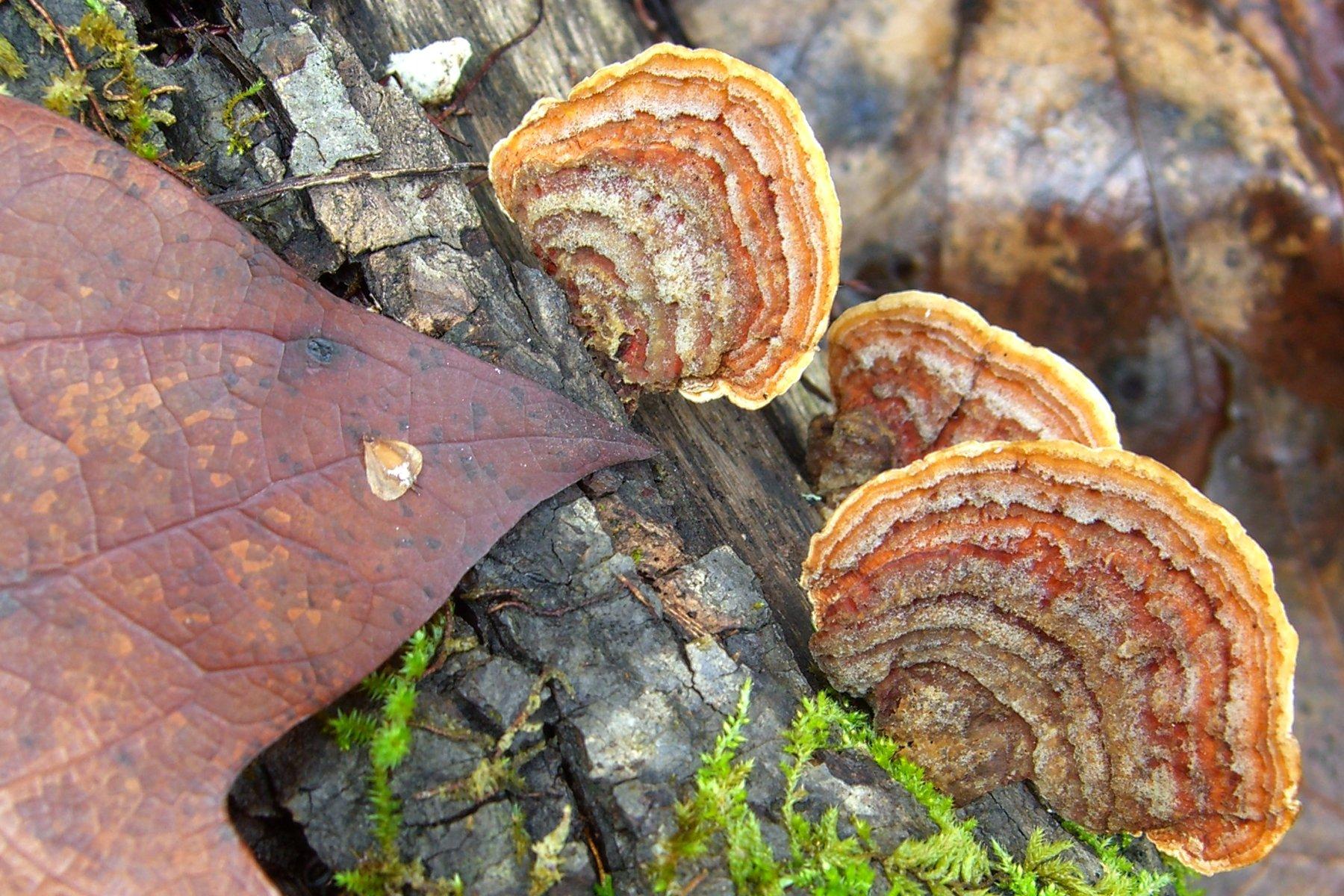
Parchment fungus
Stereum spp.
What is Parchment fungus, (Stereum spp.)?
Parchment fungus, Stereum spp., is a saprophytic group of fungi known as false turkey tails, hairy curtain crust, and hairy parchment. They inhabit dead or dying hardwood and conifer stumps, logs, or snags. Resembling dried leaves, their papery fruiting bodies display colors like white, cream, yellow, orange, or reddish-brown. While not major pathogens, they can cause wood rot in trees.
How does Parchment fungus, (Stereum spp.) occur?
Stereum spp. usually reproduces by releasing spores from its fruiting bodies. These structures can persist year-round, but spore release primarily occurs in the fall. The spores are dispersed by wind, rain, or animals and land on suitable substrates. Upon landing, the spores germinate, giving rise to mycelium that obtains nutrients from decaying organic matter. As the mycelium matures, it forms new fruiting bodies, completing the reproductive cycle. This method ensures the fungus' spread, enabling the colonization of new environments and contributing to organic material decomposition.
Symptoms
1 - Decomposition and Nutrient Cycling
• Stereum spp. aids in decomposing dead wood and organic matter and releases nutrients into the soil, benefiting plant growth. • It can contribute to nutrient cycling by recycling essential elements. • It can cause wood rot in trees. Weakens the structural integrity of the wood, potentially leading to tree decline.
2 - Habitat Provision
• Provides habitat and food sources for various organisms. • Creates niches for other fungi, bacteria, insects, and small animals. • Adds visual interest and beauty to forest ecosystems. • Colorful and unique fruiting bodies enhance natural landscapes
Solutions
1 - Cultural Control
1. Maintain tree health through proper watering, fertilization, and pruning practices. 2. Ensure proper spacing between trees to promote airflow and reduce moisture retention. 3. Minimize tree damage and wounds, as they can provide entry points for fungal infections. 4. Promptly remove and destroy infected branches or trees to prevent further spread. 5. Prune and remove infected branches to limit the spread of the fungus.
2 - Chemical Control
There are several fungicides available, such as copper-based, borate-based, thiabendazole, and propiconazole, that can be used to control wood-decaying fungi. Follow the instructions provided by the manufacturer and consult professionals for specific recommendations and proper usage.
